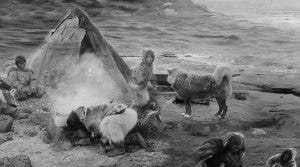Nanook of the North | Sus
Virginia Woolf writes in her essay ‘The New Biography’ (1927) that the character of Hamlet is the ideal figurative emblem for documenting the ‘increasingly real […] fictitious life’ of the modern human subject. The drama which contains Hamlet functions as the prime mover for private complexity, the ori…
Keep reading with a 7-day free trial
Subscribe to Cinema Year Zero to keep reading this post and get 7 days of free access to the full post archives.





